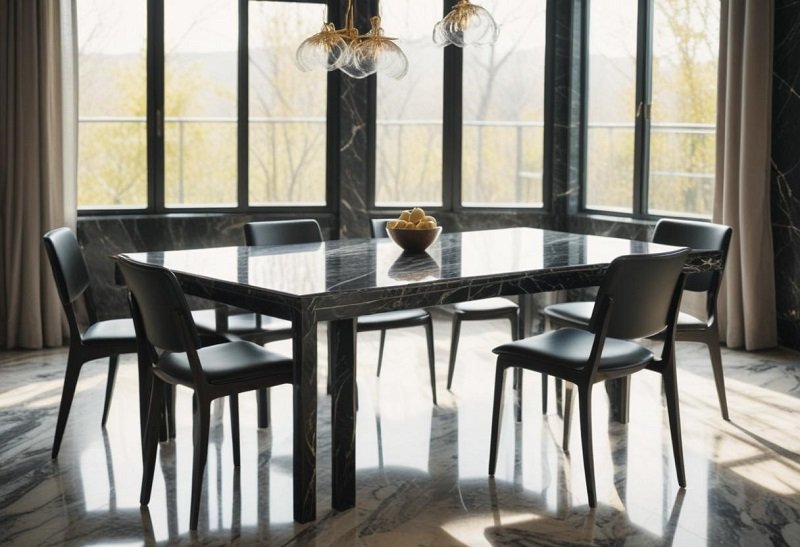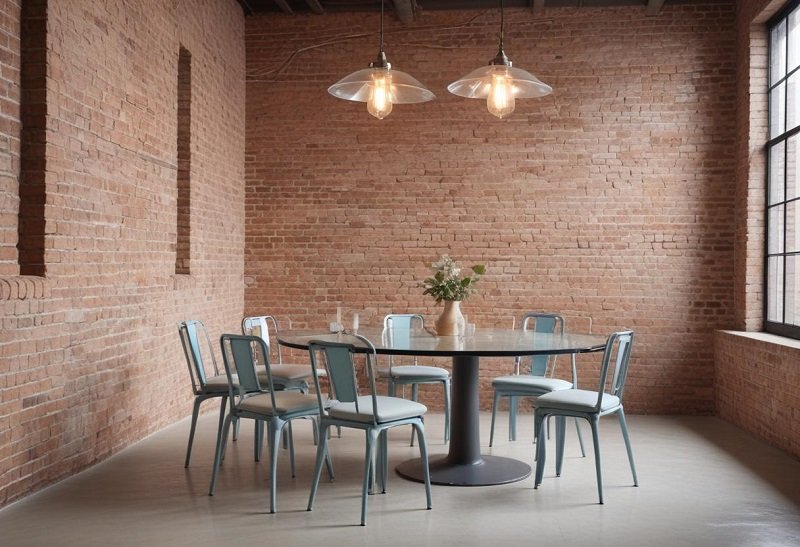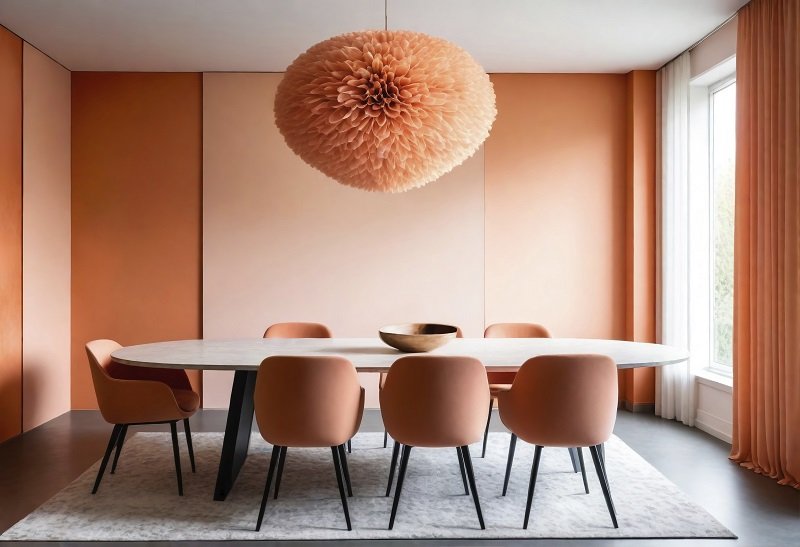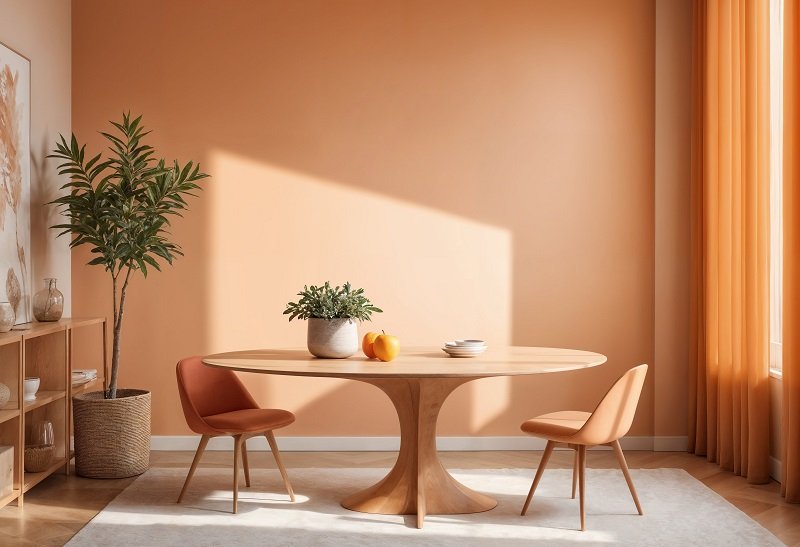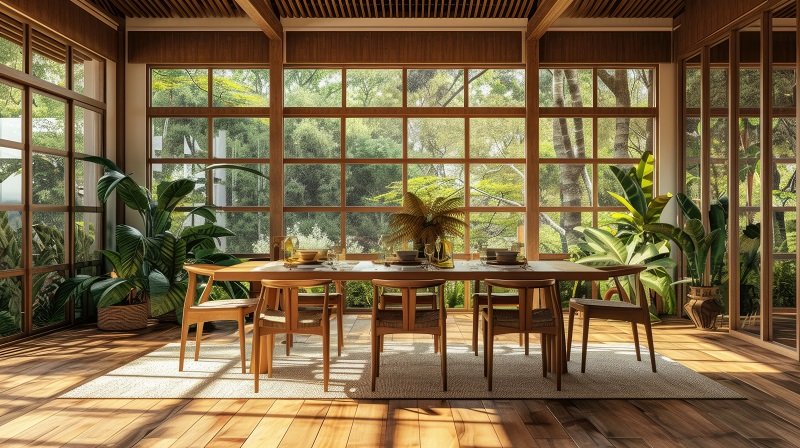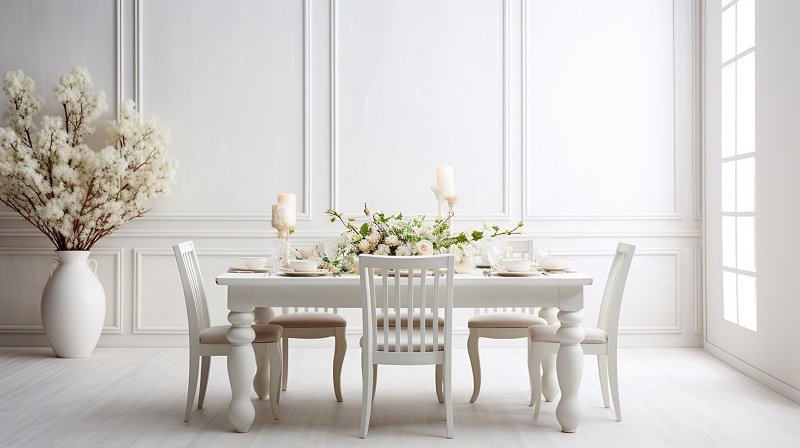- Living Room
- Dining Room
- Bed Room
- Custom Furniture

Discover the epitome of personalization with our Canadian-made furniture
Choose from a range of fabrics or luxuriant top-grain leather to create your perfect piece. Our expert team will guide you through the customization process, ensuring every detail is tailored to your taste and home. Elevate your space with furniture that's uniquely yours.
- Michael Amini Collection
- Sale
How to Choose a Dining Table?
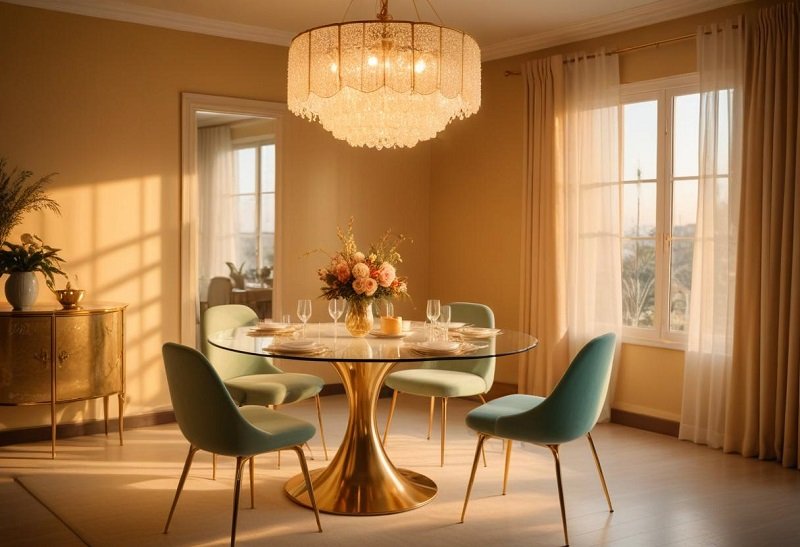
Introduction
Hosting your best friends for an evening of laughter, delicious food, and meaningful discussion is a delightful experience. The dining table is set, and the aroma of a home-cooked supper fills the air, but as you look around, something seems odd. Your dining table set, the focal point of your home’s social life, just does not match the room or occasion. This is all too often for many homes, which is why choosing the appropriate dining table set is more important than it may appear.
Whether you’re a newlywed couple moving into your first home, a growing family in need of an additional room, or an empty nester wanting to update your dining room, the right dining table set may alter your space and improve your lifestyle. At Venus Home, we understand the blend of excitement and overwhelm that comes with making such a big decision. We’re here to walk you through the process of choosing a dining table set that meets your needs and taste.

Measure Your Dining Room
Before you start thinking about materials, shapes, or designs, you should measure your dining room. This phase is like creating the foundation for a strong home; without it, everything else may fail.
Accurate Measurements Are Key
Imagine falling in love with a beautiful, handmade hardwood dining table set. It’s great – until you get home and find it barely fits through the door, let alone in your dining room. To avoid this tragedy, begin by getting the measurements of the dining room.
How to Measure Your Dining Area
- Room Dimensions: Measure the room’s length and width. Don’t forget about doors, windows, and any other architectural characteristics that may impact table arrangement.
- Clearance Space: Allow at least 3 feet of room around the table for comfortable mobility. This area allows guests to take out chairs and wander around without running into furniture.
- Optimal Table Size: Determine your dining table’s maximum and lowest dimensions based on the size of the space. A tiny dining area may benefit from a compact, round table, whereas a bigger room may handle a grand, rectangular table.
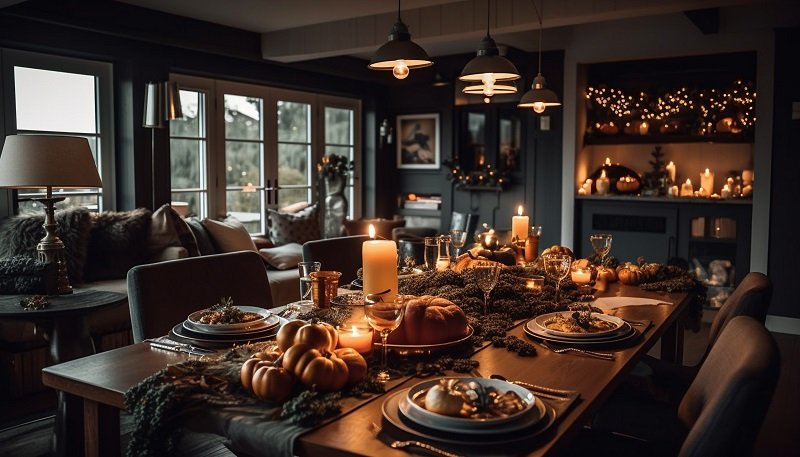
Consider the Size
Now that you have your room measurements, the following step is to decide on the size of the dining table set that would best fit your room and lifestyle. The size of your table is an important consideration that affects both the room’s appearance and functioning.
Balancing Space and Functionality
Consider your dining room as a painting. The dining table serves as the centerpiece of the room, guiding the rest of the design. A huge table might make the room feel tight and overcrowded, but a tiny table can leave the area feeling empty and unoccupied.
Choosing the Right Dining Table Set Size
- Small Spaces:
- Square or Round Tables: These shapes are ideal for smaller rooms as they provide a cozy setting and make efficient use of limited space.
- Drop-Leaf or Extendable Tables: Perfect for small dining rooms, these dining table sets can be extended when needed and folded down to save space when not in use.
- Medium Spaces:
- Oval Tables: They offer a bit more seating than round tables without taking up as much space as rectangular dining tables.
- Rectangular Tables: These can fit well in medium-sized rooms, especially if the room is longer than it is wide.
- Large Spaces:
- Large Rectangular or Square Tables: These can comfortably accommodate more guests and fill the space without making it feel sparse.
- Multiple Tables: In very large dining rooms, consider using two smaller dining table sets to create different zones or for a more dynamic look.
What Dining Table Shape Will Be Useful
The shape of your dining table plays a crucial role in determining how well it fits into your space and how it facilitates conversation and interaction among diners.
- Rectangular Tables:
- Pros: Ideal for larger rooms and can seat many people. Perfect for narrow dining areas.
- Cons: Can create a distance between guests seated at opposite ends.
- Best For: Families and those who host large gatherings.
- Square Tables:
- Pros: Great for square rooms, providing an equal amount of space for each diner. Creates a cozy and intimate dining experience.
- Cons: May not be ideal for long, narrow rooms.
- Best For: Small families or couples who prefer a more intimate setting.
- Round Tables:
- Pros: Perfect for small spaces and encourages conversation as everyone can see each other easily.
- Cons: Larger round dining table sets can make it difficult to reach the center.
- Best For: Small dining rooms or areas where you want to foster close interactions.
- Oval Tables:
- Pros: Combine the benefits of rectangular and round tables. They offer a softer aesthetic and can seat a good number of people without the sharp corners.
- Cons: May not fit well in very narrow rooms.
- Best For: Medium to large dining areas, and for those who want a mix of functionality and aesthetics.
Dining Table Style Due to Your Decor
Your dining table should not only be practical, but also complement the current design in your home. The table’s style may set the tone for your dining area and should represent both your personal preferences and the general look of your home.
Traditional:
- Features: Rich wood tones, ornate details, and classic lines.
- Best For: Homes with classic or vintage decor.
- Like a mahogany rectangular table with intricate carvings.
Modern:
- Features: Sleek lines, minimalistic design, and materials like glass and metal.
- Best For: Contemporary spaces with a focus on simplicity and functionality.
- Like a glass dining table set with chrome legs.
Rustic/Farmhouse:
- Features: Natural materials, distressed finishes, and a cozy, lived-in look.
- Best For: Homes with a country or rustic decor.
- Like a reclaimed wood table with a sturdy, weathered appearance.
Industrial:
- Features: A mix of metal and wood, raw finishes, and a utilitarian vibe.
- Best For: Loft-style or urban homes with an edgy, industrial feel.
- Like a wooden dining set with metal accents and exposed hardware.
Eclectic:
- Features: A mix of styles, colors, and materials for a unique, personalized look.
- Best For: Homes with a bold, creative aesthetic.
- Like a colorful, mismatched dining table set with varied chair designs.

The Dining Table Set Finishes
Choosing the appropriate finish for your dining table set is critical since it influences its longevity, upkeep, and overall appearance. The finish can improve the aesthetics of the table while also protecting it from normal wear and tear.
Natural Wood:
- Pros: Highlights the natural beauty of the wood grain, providing a warm and organic feel.
- Cons: Requires regular maintenance to protect against stains and scratches.
- Best For: Traditional, rustic, or farmhouse styles.
- Like a cherry wood dining table set with a smooth, natural finish that brings out the wood’s rich tones.
Stained Wood:
- Pros: Adds color and depth while preserving the wood grain. Offers more options to match your decor.
- Cons: Can be prone to chipping and requires touch-ups.
- Best For: Homes where color coordination is key.
- Like a walnut dining table with a dark espresso stain for a contemporary look.
Painted Wood:
- Pros: Provides a uniform color and can cover imperfections. Offers a variety of color choices.
- Cons: Paint can chip over time and may require repainting.
- Best For: Eclectic or cottage-style decor.
- Like a bright white painted dining table set for a fresh, clean look.
Lacquered:
- Pros: Adds a glossy finish that protects against spills and stains. Easy to clean.
- Cons: Can show scratches and fingerprints more easily.
- Best For: Modern or glam styles.
- Like a black lacquered dining table set with a high-gloss finish for a sleek, contemporary feel.
Oil or Wax Finish:
- Pros: Penetrates the wood, providing a natural look and feel. Easy to apply and repair.
- Cons: Requires regular reapplication to maintain protection.
- Best For: Rustic or traditional styles.
- Like an oak dining table with a hand-rubbed oil finish that enhances the wood’s natural beauty.
Type of Dining Table Supports
The type of support on your dining table influences both its stability and its visual appeal. The support structure, whether classic legs or contemporary pedestals, is an important factor to consider when making a selection.
1- Four Legs
Pros: Classic and stable. Provides ample legroom and can accommodate most chairs.
Cons: May limit seating at the corners.
Best For: Traditional or rustic styles.
2- Pedestal
Pros: Offers more legroom and flexibility in seating arrangements. Ideal for round or oval tables.
Cons: Can be less stable for larger tables.
Best For: Modern or elegant styles.
3- Trestle
Pros: Provides a lot of support and can seat more people comfortably. The open design can add a sense of space.
Cons: The base can be bulky and take up floor space.
Best For: Farmhouse or rustic styles.
4- Sawhorse
Pros: Unique and industrial look. Very stable.
Cons: Can take up more space and limit legroom.
Best For: Industrial or eclectic styles.
Materials for Your Style and Use
The material you choose for your dining table set has a considerable influence on its longevity, maintenance, and overall look. Choosing the proper material ensures that your table fits your lifestyle and aesthetics.
- Wood:
- Types: Oak, walnut, cherry, maple, teak, and mahogany.
- Pros: Durable, versatile, and timeless. Available in a variety of finishes.
- Cons: Can be susceptible to scratches and stains.
- Best For: Traditional, rustic, and farmhouse styles.
- Glass:
- Pros: Creates a sense of space and light. Easy to clean.
- Cons: Can show fingerprints and smudges. Requires careful handling.
- Best For: Modern and contemporary styles.
- Metal:
- Pros: Durable and low-maintenance. Offers an industrial or modern look.
- Cons: Can be cold to the touch. May require specific cleaning products.
- Best For: Industrial and modern styles.
- Marble:
- Pros: Luxurious and elegant. Adds a high-end touch to any space.
- Cons: Prone to staining and scratching. Requires regular sealing.
- Best For: Elegant and classic styles.
- Laminate/Veneer:
- Pros: Affordable and versatile. Available in various designs and finishes.
- Cons: Less durable than solid wood or metal. Can peel over time.
- Best For: Budget-friendly and eclectic styles.
Importance of Construction
The build quality of a dining table set matters to its lifetime and functionality. A well-built table can survive everyday usage and be a focal point in your house for years.
Key Considerations in Table Construction:
- Joinery:
- High-Quality Joinery: Dovetail, mortise-and-tenon, and tongue-and-groove joints provide strong connections and durability.
- Poor Quality Joinery: Staples, nails, and glue joints may not hold up over time.
- Leg Attachment:
- Solid Attachment: Legs should be securely attached to the table with strong brackets or directly integrated into the table frame.
- Weak Attachment: Legs that are simply screwed in may become wobbly over time.
- Sturdiness:
- Testing Stability: A good dining table should not wobble or creak when pressure is applied. Test by leaning on the table to check its sturdiness.
- Weight: Heavier tables are generally more stable and indicate solid construction.
- Finish and Edge Quality:
- Smooth Edges: Edges should be smoothly finished without rough spots that could cause splinters or chips.
- Consistent Finish: The table’s finish should be even and smooth, with no bubbles or rough patches.
Dining Table Functionality
When choosing a dining table set, consider how it will be utilized in your everyday life. Consider whether you need an extensible table to accommodate bigger groups or a table with inbuilt storage for dining necessities. Versatility is essential, so selecting a table that adjusts to different demands will improve your eating experience.
- Extendable Tables:
- Pros: Ideal for hosting larger gatherings and can be adjusted for everyday use. Offers flexibility in seating capacity.
- Cons: The mechanisms may require maintenance over time.
- Best For: Families who entertain guests frequently.
- Drop-Leaf Tables:
- Pros: Perfect for small spaces as the leaves can be folded down when not in use. Provides versatility without taking up too much space.
- Cons: Limited in how many people they can accommodate compared to extendable tables.
- Best For: Small apartments or kitchens.
- Storage-Integrated Tables:
- Pros: Offers additional storage space for dining essentials like cutlery, napkins, or table linens. Helps keep the dining area organized.
- Cons: Can be bulkier and more expensive.
- Best For: Homes with limited storage space.
Comfort You Desire
Comfort is an important consideration when buying a dining table set since it directly affects how pleasurable your meals will be. Ensure that the table height is acceptable, usually approximately 28-30 inches, and pair it with seats that give sufficient back support. Adding upholstered chairs or cushions can also improve comfort, particularly during extended meals.
Your Budget
When buying a dining table set, you need to find a balance between quality and cost. Set a reasonable budget and concentrate on choosing a table that satisfies your most crucial requirements. Look for deals, discounts, or secondhand possibilities to discover high-quality tables within your budget. Remember that investing in long-lasting materials might save you money over time by eliminating the need for regular replacements.
Dining Table Maintenance and Durability
Maintenance needs and durability levels vary depending on the material. Wood tables require frequent dusting and polishing, glass dining tables can be cleaned with a glass cleaner, metal tables should be wiped down with a damp cloth to prevent corrosion, and marble dining table sets require sealing and careful washing to avoid stains. Consider your lifestyle and select a material that is easy to keep and durable enough for everyday usage.
- Wood:
- Care Tips: Regular dusting, avoiding direct sunlight, and using coasters and placemats to prevent stains and scratches.
- Durability: High-quality wood tables can last for decades with proper care.
- Glass:
- Care Tips: Clean with glass cleaner and a soft cloth to avoid streaks and scratches. Handle with care to prevent chips.
- Durability: Resistant to moisture and heat but can be prone to scratches and fingerprints.
- Metal:
- Care Tips: Wipe with a damp cloth and mild cleaner to prevent rust and tarnish. Avoid abrasive materials that can scratch the surface.
- Durability: Highly durable and resistant to most types of damage.
- Marble:
- Care Tips: Seal regularly to prevent stains. Clean with a soft cloth and pH-neutral cleaner.
- Durability: Very durable but requires careful maintenance to avoid staining and scratching.
Conclusion
Choosing a dining table set is a complex decision that takes into account space, size, shape, style, finishes, supports, materials, construction, usefulness, comfort, cost, and upkeep. Each component is important in ensuring that your dining table not only complements your home design but also satisfies your functional demands and lifestyle.
By carefully considering these factors, you may locate the perfect dining table set that will become a cherished centerpiece in your home, bringing family and friends together for years to come. Venus Home Furniture is committed to assisting you in making informed choices while also providing a diverse range of dining tables to fit every style and need.
FAQs
1- What size dining table should I choose for a small dining room?
For small dining rooms, consider round or square tables that fit comfortably without crowding the space. Measure your dining area and leave at least three feet of clearance on all sides for easy movement.
2- What is the best shape for a dining table if I often host large gatherings?
Rectangular or oval tables are ideal for large gatherings as they offer more seating capacity and can often be extended with leaves to accommodate additional guests.
3- How do I match my dining table to my existing decor?
Consider the style, color, and material of your existing furniture and decor. Choose a dining table that complements these elements. For example, a modern glass dining table set can enhance contemporary decor, while a wooden dining set fits well with traditional or rustic styles.
4- What materials are best for a durable dining table set?
Solid wood (like oak, walnut, or maple), metal, and tempered glass are all durable materials. Each has its own maintenance requirements and aesthetic appeal, so choose one that fits your lifestyle and decor.
5- How can I ensure my dining table is comfortable for long meals?
Ensure the table height is appropriate (28-30 inches for standard tables) and pair it with comfortable chairs that provide good back support. Consider adding upholstered seats or cushions for extra comfort.
6- Are extendable dining tables a good investment?
Yes, extendable dining tables offer flexibility for different occasions. They are a great investment for those who entertain frequently but want to save space for everyday use.
7- What are the maintenance requirements for different dining table materials?
Wood tables need regular dusting and occasional polishing; glass tables should be cleaned with a glass cleaner; metal tables can be wiped with a damp cloth to prevent rust; marble tables require sealing and careful cleaning to prevent stains.
8- How do I balance quality and budget when choosing a dining table?
Set a realistic budget and prioritize essential features. Look for sales, discounts, or second-hand options to find high-quality tables within your budget. Investing in durable materials can also save money in the long run.
9- What are the benefits of having a storage-integrated dining table?
Storage-integrated tables offer additional space for dining essentials, keeping the area organized. They are especially useful in smaller homes where storage is limited.
10- Can a dining table be placed on a rug, and what size rug should I use?
Yes, placing a dining table on a rug can define the space and add warmth. The rug should be large enough to fit the table and chairs, with extra space to allow the chairs to be pulled out without catching on the edges. A good rule of thumb is to leave at least 24 inches of rug beyond the table edges.

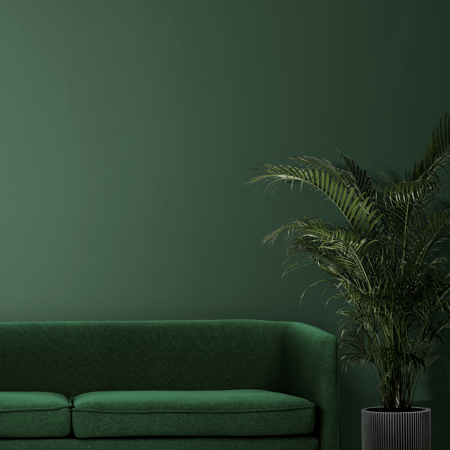
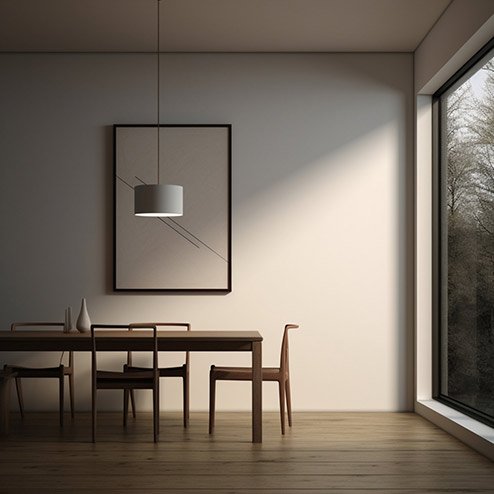
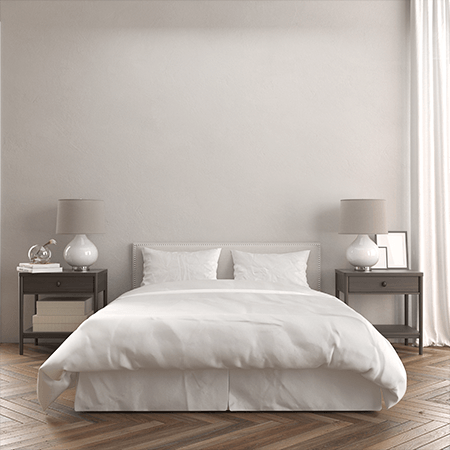
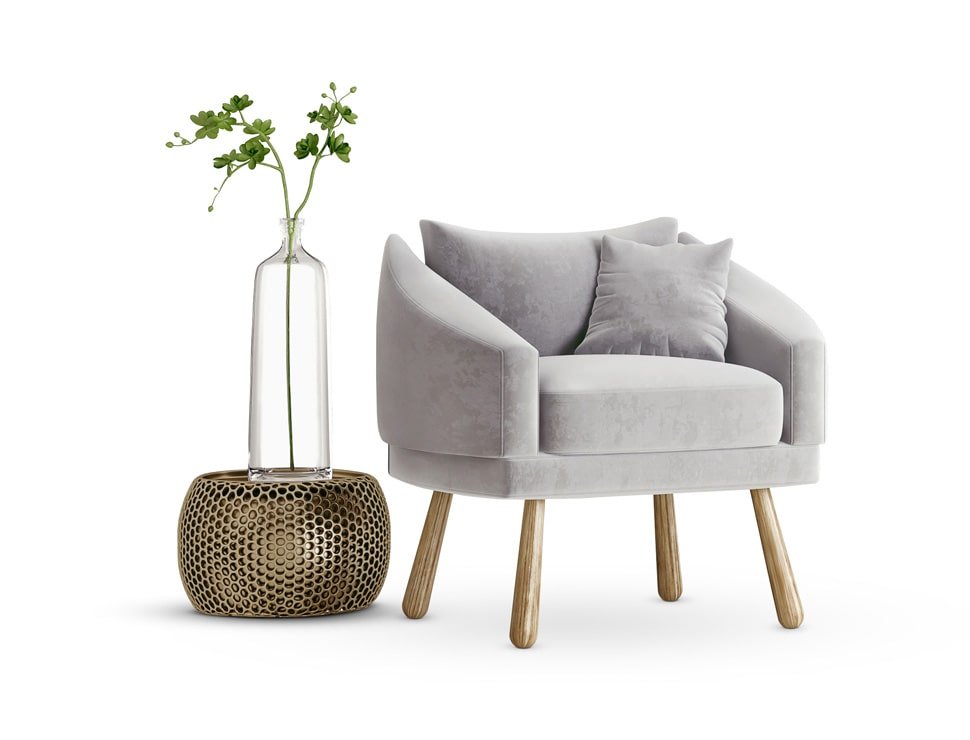
 Chandeliers
Chandeliers Clocks
Clocks Decorative Accent
Decorative Accent Mirrors
Mirrors Floor Lamps
Floor Lamps Table Lamps
Table Lamps Wall Art
Wall Art
